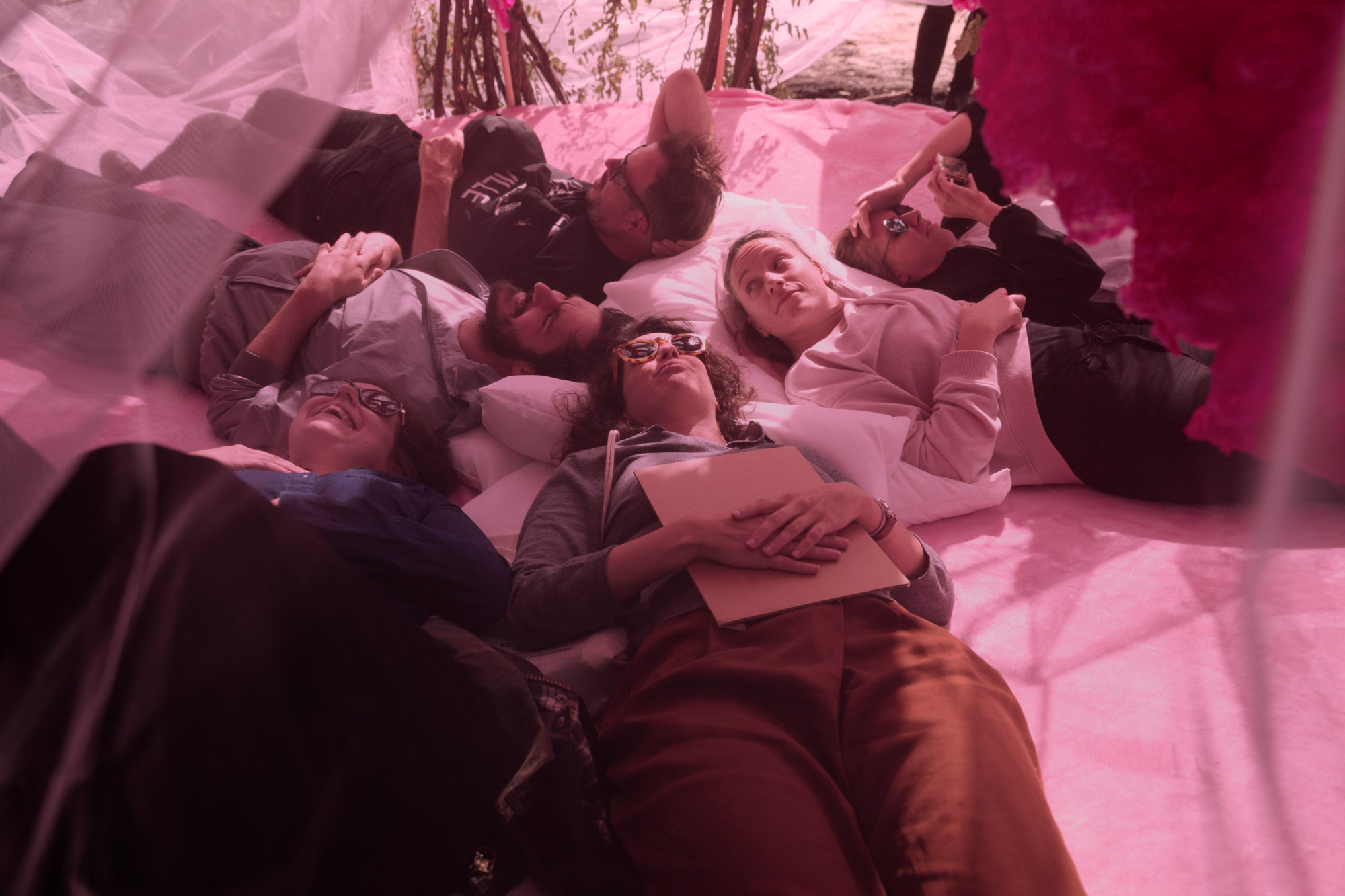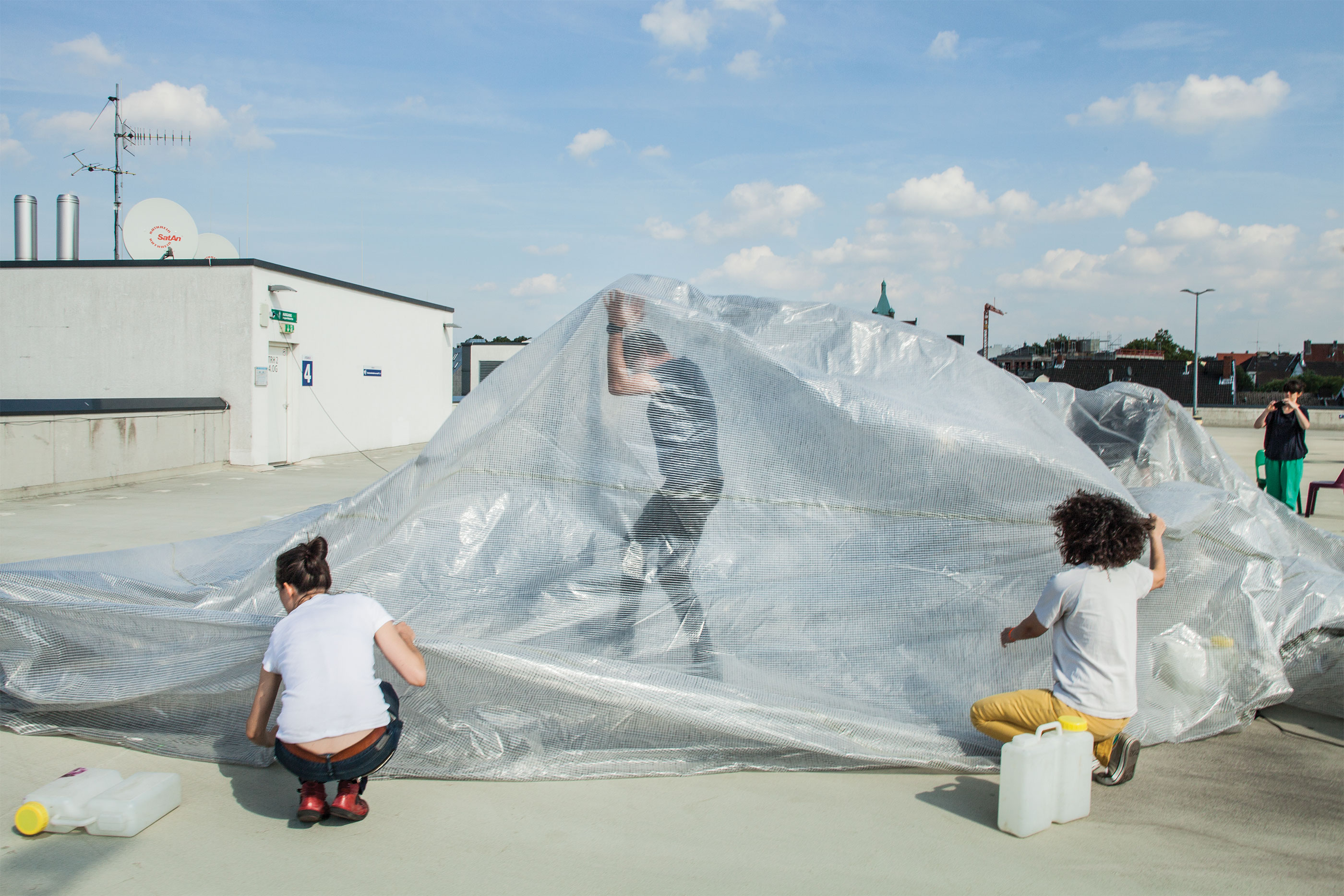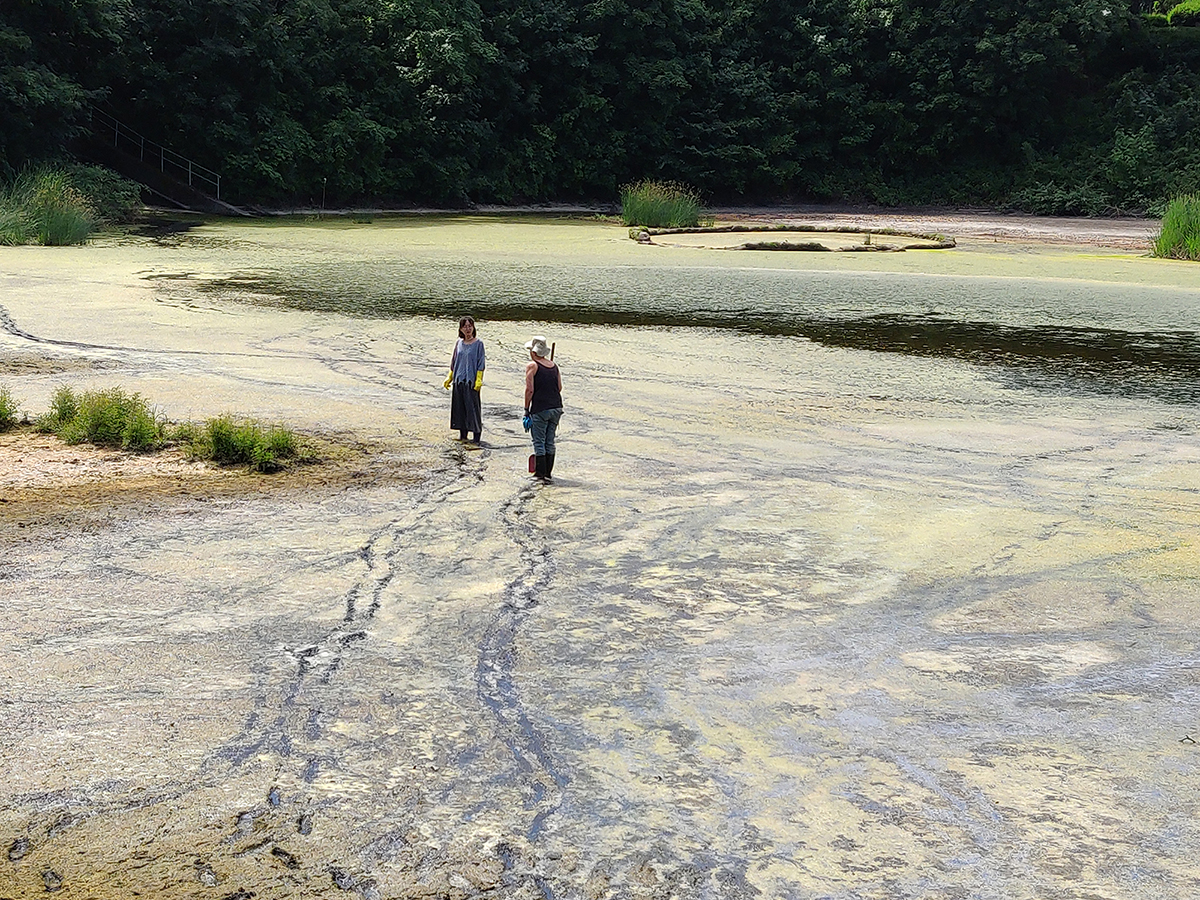Spaces of Love and Coexistence
Takk’s mobilising architecture
In the age of the Anthropocene, anthropocentrism has been the central driver of progress. More recently, this modus operandi has been reassessed across the spectrum of artistic and scientific disciplines. What does an architecture of co-existence with – rather than superiority over – the non-human look like? How can designing and building in this way break down the prevailing human-centered narratives of architecture? Describing themselves as concerned with “the intersection between nature and culture [and] the overcoming of anthropocentrism”, TAKK are Alejandro Muiño + Mieria Luzárraga. The pair opened their Making Futures workshop with an introduction to examples of their “other ways of approaching aesthetics and materiality”.
An awareness of context was immediately evident as they emphasized the places where they work. TAKK’s office has gradually turned into a lab, a site for testing processes for exploring critical architecture that aims at building more open societies. This knowledge is then taken out to the city, the site where “architecture mobilises it”. The workshop practice embodied this focus on place as a site of coexistence as participants built a structure at the Floating University, using a structural systems of hula hoops and wooden poles, that were then covered using sticks/flora collected from the surroundings and expanding foam. Bright colours and different textures completed the work, creating a link with and a greater awareness of material flows and the politics around them.
When a work is framed in such a way, the use of the materials and colours are not secondary elements. TAKK’s choices of materials can seem at odds with the idea of an ecologically aware practice, given that some are not necessarily ‘environmentally friendly’? But this comes back to a relation to context. As Alejandro explained, “we like to work with contemporary materials and we like to buy materials from the same social context in which the work is placed,” adding that the colours chosen can also be overtly political (in the case of the workshop structure, bright pink and green).
The striking nature of these works also prompts questions about image and representation. Does the attention paid to materials and appearance lead to an overemphasis on style over substance? TAKK themselves have an extremely well-defined aesthetic that is disseminated via Instagram presence. Here, the work they produce gains an extended digital life. Is this ephemeral nature more important than the built structures themselves? In fact, the pair have remarked that they find the question of the ephemeral as being “somewhat irrelevant”. The sophisticated aesthetic that characterises the work is underlined by an extended research work preceding each project – a long-duration engagement with context. This ultimately guides and informs the resulting aesthetic of the “finished” works: spaces of co-existence that are open for inhabitation by humans and non-humans alike.
Mireia Luzárraga and Alejandro Muiño are architects with degrees (honors) from Escuela Técnica Superior de Arquitectura de Madrid (ETSAM-UPM) and Escuela Técnica Superior de Arquitectura del Vallés (ETSAV-UPC) respectively and Masters of Architecture from the Universidad Internacional de Cataluña (ESARQ-UIC).We invited Takk to build an intervention together with participants entitled “Spaces of Love and Co-existance” as part of our plug-in at the Floating University in June 2018.



